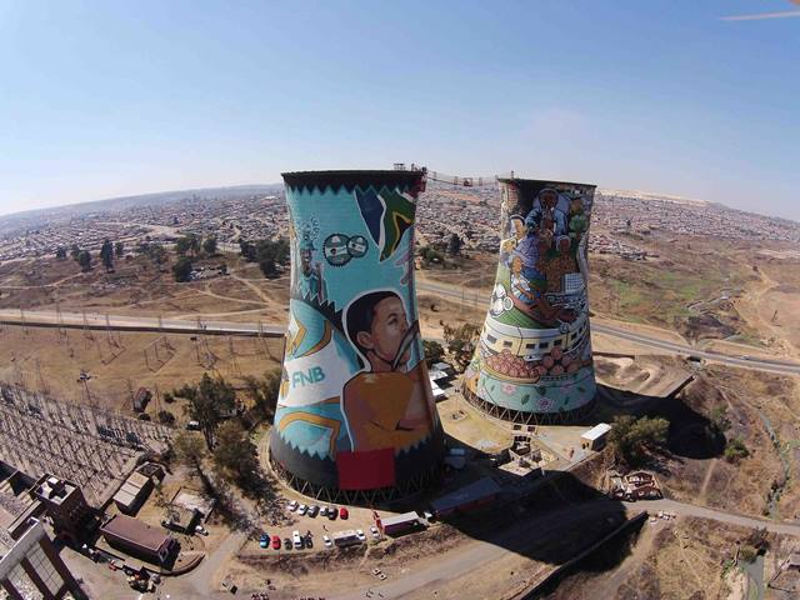Little Known Facts About Johannesburg North Attractions.
Little Known Facts About Johannesburg North Attractions.
Blog Article
What Does Johannesburg North Attractions Do?
Table of ContentsJohannesburg North Attractions - TruthsThe 3-Minute Rule for Johannesburg North AttractionsGetting The Johannesburg North Attractions To WorkThe Basic Principles Of Johannesburg North Attractions Fascination About Johannesburg North AttractionsIndicators on Johannesburg North Attractions You Need To Know
The city grew on the side of the Witwatersrand Key Reef, a below ground stratum of gold-bearing quartz-silica empire that arcs for hundreds of miles underneath the Highveld - Johannesburg North attractions. Most of the gold mines in the city ceased procedure in the 1970s, however in its day the Witwatersrand gold industry accounted for even more than 40 percent of the globe's annual gold manufacturing.Johannesburg has a warm climate. Summer season temperature levels average concerning 75 F (24 C); winter months temperature levels balance about 55 F (13 C) and only periodically dip below cold. The city takes pleasure in about 8 hours of sunlight daily in both winter season and summer season. Rainfall standards about 28 inches (700 millimetres) per year, however the overall differs considerably from year to year.
What rainfall the city gets drops virtually exclusively in the summertime months, usually in incredible late-afternoon electric tornados., where numerous citizens still count on coal for gas.

Things about Johannesburg North Attractions
The equilibrium of the city is occupied by whites. Holiday accommodation varies in character and top quality.
Physical growth, although rather limited by transportation, proceeded rapidly as immigration to South Africa, and Johannesburg particularly, increased substantially. This problem was solved in the 1930s when the automobile was introduced in mass production to South Africa. Cars were, essentially, constrained to the rich, and permitted them to transfer to the north of the city and commute right into the centre.
The majority of bad suburban areas were combined, with bad blacks and whites living with each other, although the affluent suburbs were generally scheduled for whites.
The previous system of eleven numbered areas was reorganised in 2006. Marshalltown, as seen from the top of the Carlton Centre. The M1 and M2 run behind the structures, and the southern residential areas prolong past the highway limit. The central city of Johannesburg lies within the city's Area F. The estimated populace of the area is 200,000, [] The number of individuals living in the internal city on an informal basis is unknown, as several are unlawful immigrants. The majority of higher-income locals and white individuals have actually relocated to the northern suburbs and have actually been changed by lower-income black people. The joblessness, education, and age profiles of the area are all unidentified, due to the problem of getting trustworthy information regarding the location.
Everything about Johannesburg North Attractions
Yeoville and Bellevue have a mix of apartment and solitary property systems on small whole lots. The area is located that site on a mountainous divide that ranges from eastern to west. The most conspicuous geographical function is Observatory Ridge, which is named for the huge observatory located on it. The recreational rooms are no more used, due to security troubles.

Johannesburg Stadium, a training ground for both the Golden Lions and Orlando Pirates, is nearby. The eastern residential areas of Johannesburg are situated in the city's 7th [] and 9th [] areas. The location is also functionally integrated with East Rand border towns outside of the official boundary of Johannesburg, such as Bedfordview and Edenvale (both component of Ekurhuleni Metropolitan Town).
The Only Guide to Johannesburg North Attractions
The eastern suburban areas are some of the oldest locations of Johannesburg, there are large areas of Jewish and other European histories, the bulk of the population is English talking. There are three golf training courses as well as a number of protected ridges with viewsites.
Originally developed to house male migrant employees, many have been enhanced as houses for pairs and family members. The residential area was not traditionally allowed to create employment centres within the area, so almost all of its helpful site locals are commuters to other components of the city.
The 9-Minute Rule for Johannesburg North Attractions
The N1 Western Bypass connects the northern suburbs with the north-western residential areas. The household locations in the north suburbs are generally formal, without see here significant areas of casual housing, or housing that does not have a long-term structure. Although this is a well-known area, there is a fad of land usage adjustment from property to commercial, especially along main arterial roads and around well-known nodes.
Roadways to the eastern and west are much less well developed, as there are no freeways travelling in that direction. In the direction of the north boundary of the city, the thickness of growth reduces, leaving big locations of untaught land around Midrand.
The Single Strategy To Use For Johannesburg North Attractions
The initial suburban area to the north of the central city is Parktown, which is situated on a hill neglecting the central city and Hillbrow. It has numerous well-off locals and Edwardian-design mansions, along with the Education and Clinical universities of the College of the Witwatersrand. The huge concrete Charlotte Maxeke Johannesburg Academic Medical Facility controls the skyline of Parktown.
Report this page